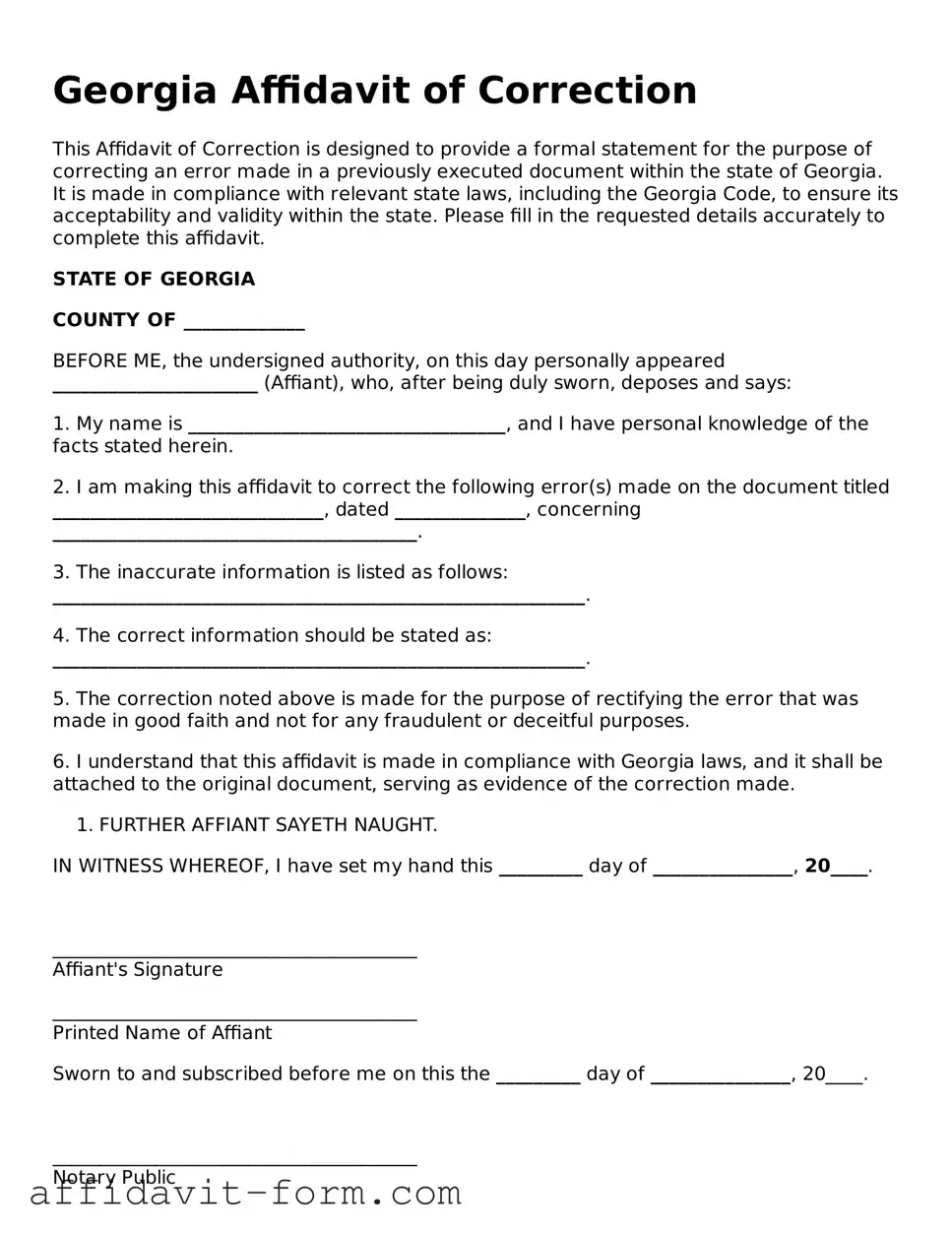Georgia Affidavit of Correction
This Affidavit of Correction is designed to provide a formal statement for the purpose of correcting an error made in a previously executed document within the state of Georgia. It is made in compliance with relevant state laws, including the Georgia Code, to ensure its acceptability and validity within the state. Please fill in the requested details accurately to complete this affidavit.
STATE OF GEORGIA
COUNTY OF _____________
BEFORE ME, the undersigned authority, on this day personally appeared ______________________ (Affiant), who, after being duly sworn, deposes and says:
1. My name is __________________________________, and I have personal knowledge of the facts stated herein.
2. I am making this affidavit to correct the following error(s) made on the document titled _____________________________, dated ______________, concerning _______________________________________.
3. The inaccurate information is listed as follows: _________________________________________________________.
4. The correct information should be stated as: _________________________________________________________.
5. The correction noted above is made for the purpose of rectifying the error that was made in good faith and not for any fraudulent or deceitful purposes.
6. I understand that this affidavit is made in compliance with Georgia laws, and it shall be attached to the original document, serving as evidence of the correction made.
- FURTHER AFFIANT SAYETH NAUGHT.
IN WITNESS WHEREOF, I have set my hand this _________ day of _______________, 20____.
_______________________________________
Affiant's Signature
_______________________________________
Printed Name of Affiant
Sworn to and subscribed before me on this the _________ day of _______________, 20____.
_______________________________________
Notary Public
My commission expires: ________________.
